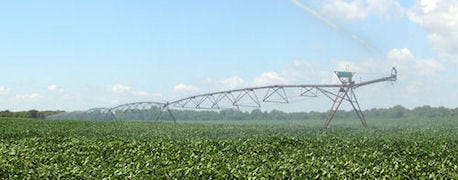
Put loose soil in a jar to represent tilled, conventionally-worked land. Then put no-till soil in a jar next to it. Have catch pans underneath of both jars. Which one will collect water first in the catch basin?
It may sound like a trick question, but it's not. Barry Fisher uses this demonstration as part of his pitch to help farmers realize that soil health is important, and that reduced tillage, especially long-term no-till, is a prime way to achieve improved soil health. Fisher is an agronomist with the Natural Resources Conservation Service. He is assigned to help promote no-till and conservation tillage across the state.

Water Infiltration Insights For Tilled vs. No-Till Soil
The answer is that water will drip out of the no-till soil first, he says. That's because it has more pore space that is still open. As soon as water hits the loose, conventionally tilled soil, the downward force of the water, and it would be the same for raindrops hitting the soil, pushed down and closes pores. The keeps water from moving through the profile. In fact, it can take a long time for water to penetrate through even a few inches of soil in that situation, he says.
Conversely, try this question. If it rains, which field will have better infiltration, the no-till field or the tilled field? Infiltration refers to how quickly water moves into the soil after a rain.
Hands down, it will move into the soil better in the no-till field, Fisher says. Improved infiltration of water is a plus for no-till. It not only helps prevent soil erosion because soil particles aren't detached as water ponds on top, but it also helps build up water reserves for later.
That's why you often see water ponding on the surface of tilled fields during or just after a big rain storm, he notes. Typically, water is slower to pond and quicker to get away in a no-till field, unless there is some unusual drainage issue that would be an obstacle no matter what type of tillage was used.
About the Author(s)
You May Also Like




